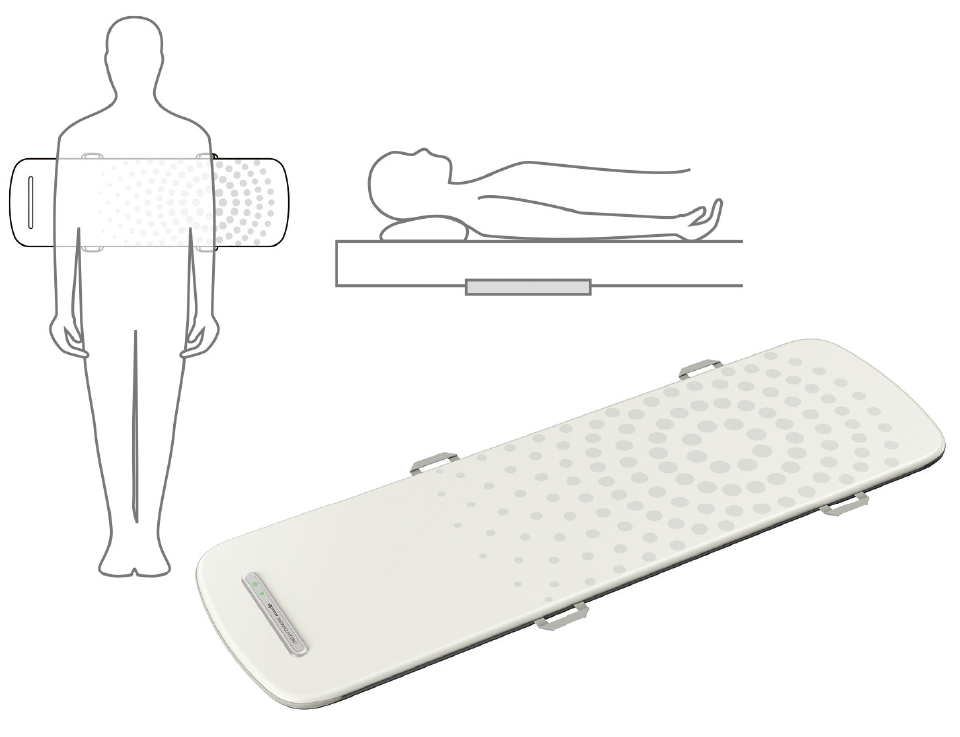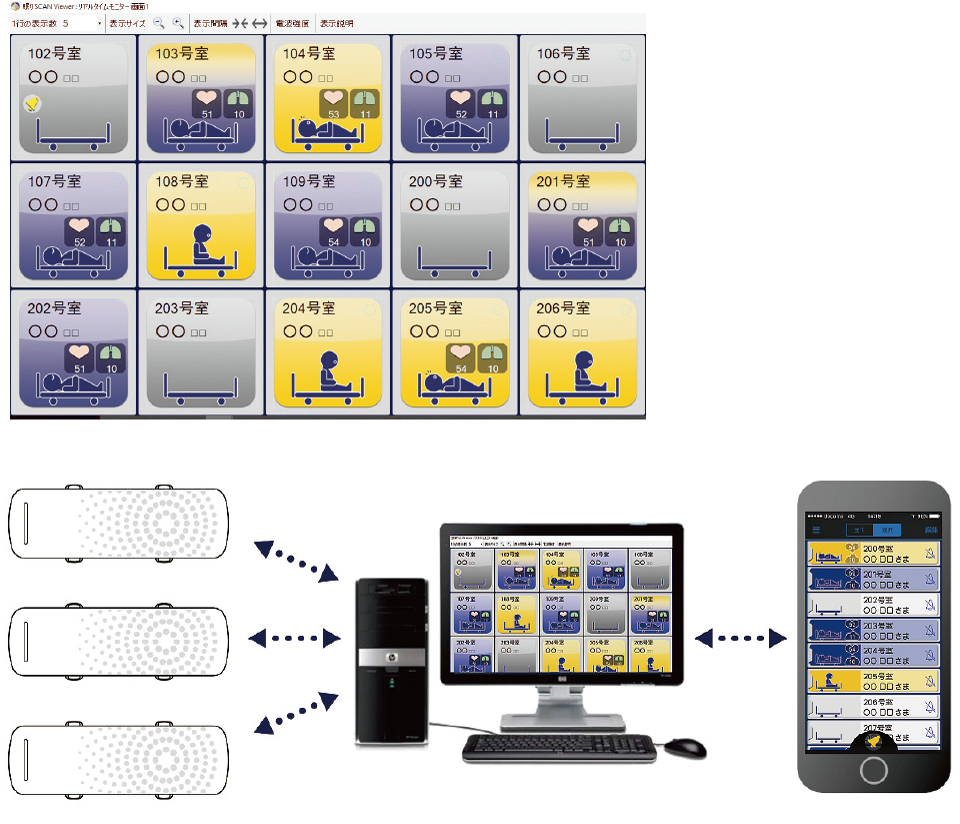February 2021
Sleep Scanning

A manufacturer of beds for medical treatment and nursing care has developed a sensor that can be attached to a bed to measure a person’s sleep state. The device is contributing to the improvement of the sleep quality of residents in facilities for the elderly and reducing the burden on the staff at these facilities.
Keeping watch during the night is a significant burden on staff working in facilities for aged people, such as nursing homes. They have to do rounds every couple of hours to prevent injuries from falls or other accidents that the elderly residents with dementia may experience when walking around or going to the bathroom at night. In some facilities, the physical and mental burden borne by staff is exacerbated by the fact that a single staff member must take care of everything from eight at night to seven the next morning.
Paramount Bed Co., Ltd., whose main products are beds for medical treatment and nursing care, sought to address these issues.
The company developed a system of checking for changes in the condition of people in bed, including sleeping, awakening, rising and getting out of bed, and measuring respiratory rates by assessing the movements of the person sleeping in a bed through a sheet-shaped sensor installed under the bed’s mattress.
The Nemuri SCAN system (nemuri means sleep) enables the staff of care facilities to access the real-time condition of its residents 24 hours a day. If residents take any action, such as rising or getting out of bed, this information is transmitted to computers installed in the staff room and/or the staff’s mobile devices. Staff can take the necessary measures without continually having to keep watch.
“Our achievements in the study of sleep states without placing stress on the person sleeping led to the creation of Nemuri SCAN,” says Kumagai Koji from Paramount Bed’s public relations department. “When devices such as sensors are attached to a person’s body to measure sleep states, the device itself puts stress on the individual and prevents the measurement of natural sleep states. Therefore, we developed a system enabling us to ascertain the condition of a sleeping person objectively using a sheet-shaped sensor installed under the mattress.”
A sheet-shaped sensor capable of detecting the slight movements of a sleeping person and their respiration and heart rates was necessary to get a full picture of the person’s sleep state without attaching a device to the person. People involved in development brought prototype sensors home to measure their own sleep and recorded data almost every day. The proprietary high-precision sensor was developed based on that accumulated data.
Up to the end of September 2020, 55,000 Nemuri SCAN sensors have had been sold since its launch in 2009. Recently, the product has new features including the transmission of images captured by a camera attached to the bed to the staff’s mobile phones when a resident gets up.
Collecting accurate sleep data is useful from the perspective of care program optimization. “For example, we take remedial steps such as increasing activities including light exercise during the day for persons who are not able to get enough sleep due to their waking up many times during the night. By doing so, we can provide them with better sleep,” says Kumagai.
The company entered a business partnership with Sompo Holdings, Inc. in May 2020, and installed the Nemuri SCAN in all of the operator’s approximately 18,000 rooms at nursing homes. It collects a range of data, including data about sleep, diet, medication and activities, subject to the consent of residents. By sharing the data that is gathered with academic institutions, medical organizations and private-sector companies, the system is intended to facilitate the improvement of nursing services, the early detection and treatment of dementia, as well as the development of supplements and exercise programs.
Kumagai says, “In addition to finding solutions to problems in the medical and nursing care fields, we hope to apply the data we have accumulated to provide a better quality of sleep for everyone.”



